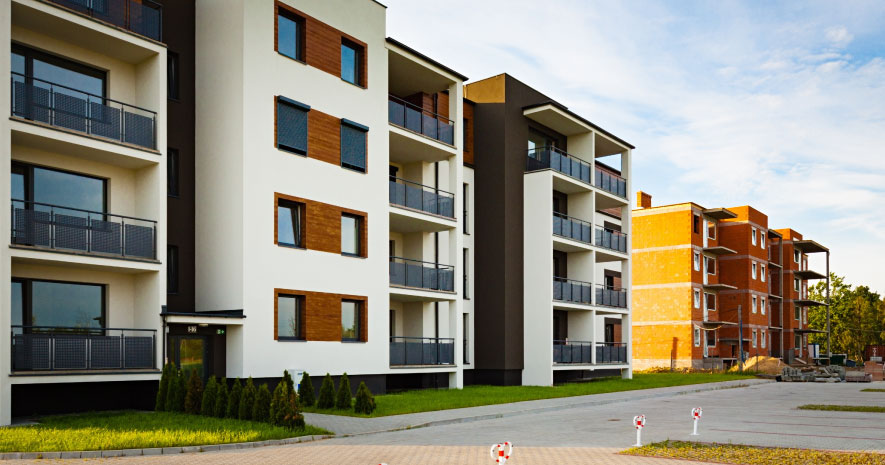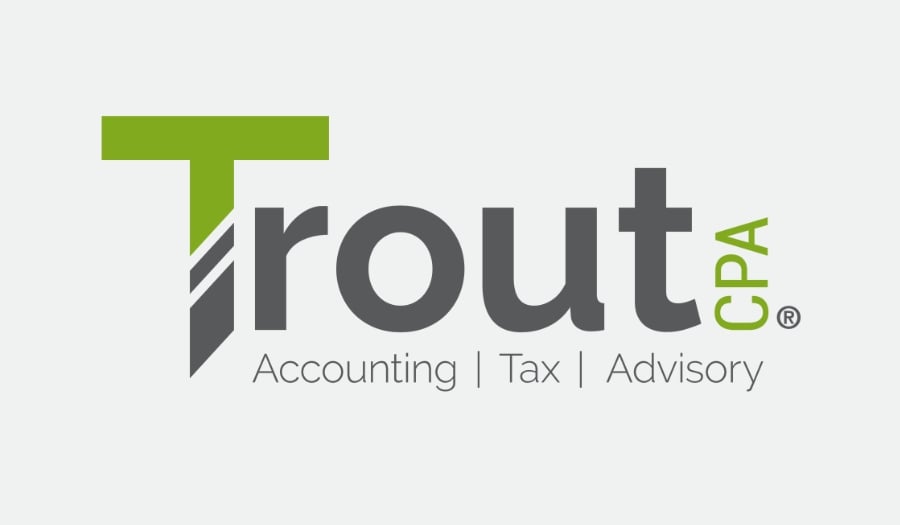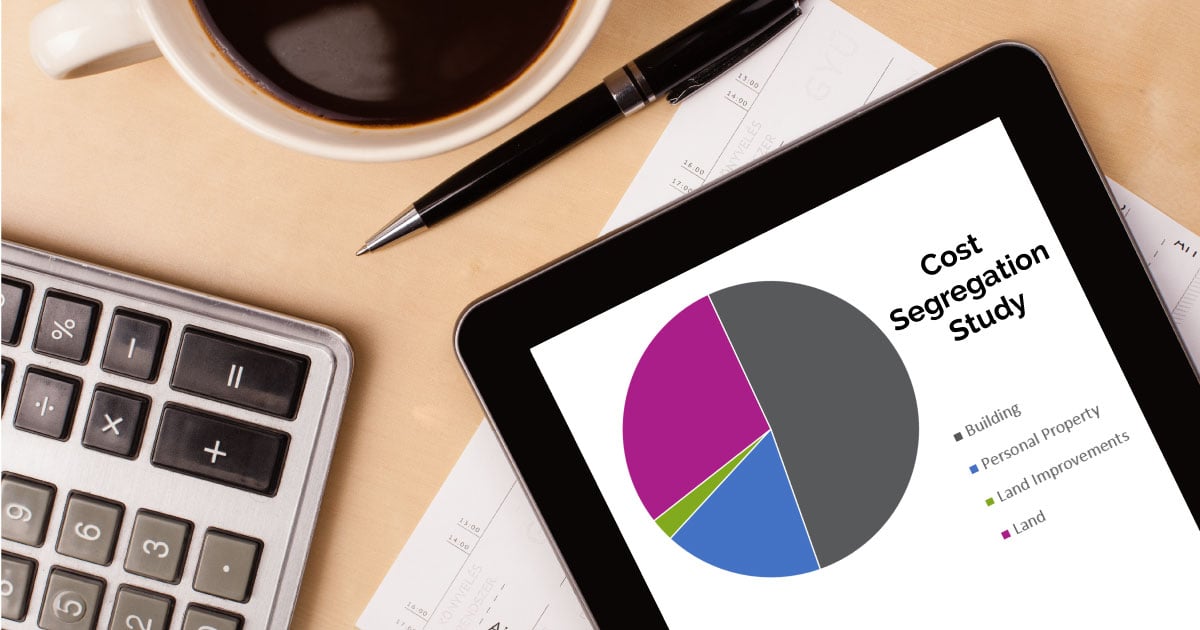The global events of the past two years have had a profound impact on real estate, from the disruption to office real estate to the rise of secondary markets. In terms of sectors that have seen positive growth, industrial and multifamily have emerged as clear frontrunners. Multifamily owners and investors have benefited from the shift to remote and hybrid work environments as employees sought homes with more space and amenities, and industrial owners and investors benefited from an increase in e-commerce demand.
Now these sectors are in a proverbial horse race as they compete for labor, materials and investment. Investors wondering which will come out ahead should be aware of current trends in both sectors.
Multifamily vs. Industrial
As of this writing, investor interest in multifamily development is outpacing industrial. CBRE expects multifamily investment volume to reach $234 billion in 2022, a 10% increase from $213 billion in 2021. Multifamily construction starts slowed by 40% during the pandemic, but have returned to pre-pandemic levels, despite the increased cost of supplies.
Multifamily development might currently be outpacing industrial, but demand for industrial remains high. In February 2022, construction starts on warehousing alone were up 40% from February 2021. Furthermore, Dodge Data & Analytics forecasts $53 billion of construction initiatives in the U.S. warehouse and distribution center market this year, representing over one-third (36%) of the entire U.S. commercial construction sector this year. Over the next five years, the U.S. will require 1 billion square feet of industrial real estate space to keep up with e-commerce demand, according to JLL.
While there is not much overlap between the contractors who build multi-unit residential and industrial, they will be competing for the same labor, as the construction industry’s labor market was already experiencing shortage issues before the pandemic. This could tip the scales in terms of which sector comes out ahead.
The sectors are toe to toe in terms of growth rate. Ultimately, investment decisions may come down to construction costs and who makes the more compelling case for their specific project and its ability to produce a higher internal rate of return.
Multifamily
Though they may come with affordability concerns, multifamily properties in primary, coastal markets remain attractive investments. According to a Unacast study, rates of migration to Manhattan are growing twice as fast as they did in 2019, despite New York City rents rising 33% between January 2021 and January 2022 — in many cases, surpassing pre-pandemic levels. Demand for multifamily housing is projected to remain high in the coming years. This is partially due to limited supply and partially due to an influx of first-time renters. Young people entering the job market may have weathered the worst of the pandemic at their parents’ homes. Encouraged by more job opportunities and widespread wage increases, many young people are signing their first apartment leases.
Younger renters are joining older renters in multifamily dwellings. A recent Pew Research Center survey found 44% of non-parents ages 18 to 49 say it is not too or not at all likely that they will have children someday, an increase of 7% from a 2018 survey. Those who do start families are increasingly having children later than previous generations. Trends like these have coupled with the rapidly rising cost of single-family housing to disrupt the traditional trajectory of American homeownership.
Even current homeowners are not immune to the charms of renting. As life expectancy grows, more seniors are selling family homes and moving into lower maintenance rentals. Population growth trends make the U.S. multifamily housing market especially appealing to foreign investors, who are drawn to its secure and consistent cash flows and strong returns compared to fixed-income alternatives. Non-U.S. investors are increasingly moving out of primary markets to take advantage of growing cities, many in the American Southeast and Southwest. Foreign investment into the U.S. multifamily market increased 30% in 2021, up from 24% in 2019, according to a MultifamilyDive report, and 86% of foreign investors are planning to increase their positions in multifamily, according to the 2021 Association of Foreign Investors in Real Estate (AFIRE).
Renter population growth is just one of the reasons multifamily appeals to lenders and investors. Projects are relatively easy to finance, and a same-store comparison is a relatively easy analysis. As more companies move to or expand in areas where the talent is, multifamily’s allure is bound to grow.
Industrial market
Industrial real estate has demonstrated flexibility in an economy shaped by rapidly shifting product lines and evolving business models. Industrial real estate vacancy rates dropped to a record low of 3.2% in the fourth quarter of 2021, according to a January 2022 CBRE report. Areas in Southern California and Central New Jersey as well as Boston, Charleston, Reno and Salt Lake City all boast vacancy rates below 2%. Demand continues to outpace supply, with third-party logistics companies driving sector growth.
Third-party logistics companies are projected to comprise 35% of all industrial leases in 2022. Class A space is seeing the highest demand. Much of it is new construction, as cutting-edge, smart technologies typically require more space: Between 60% and 82% of respondents report recent projects involved the installation of data-capturing smart controls, audiovisual and light communications and security and access control and tracking systems, according to a recent Dodge Data & Analytics survey.
In the Class B space, adaptive repurposing is gaining traction. In a trend emblematic of the acceleration of e-commerce, brick-and-mortar retail spaces are frequently converted into warehouses for fully online retailers or those looking to support online expansion. Depending on the size of the retailer and inventory requirements, repurposing initiatives can involve extensive renovations, making most adaptive repurposing projects expensive investments.
Rising inflation makes investments in Sun Belt locations, where job and population growth is greater than 7% or 8%, more appealing to investors. In addition to location, investors might want to keep the sustainability of projects that prioritize environment, social and governance (ESG) in mind. More than two-thirds of owners (68%) are interested in creating zero-carbon facilities that incorporate green materials. Demand will be particularly high for green materials, as sustainability has gained more traction as a key consideration in both multifamily and industrial projects. Appetite for materials will converge with the need for overlapping personnel to create stiff competition between the two sectors.
Big Data requires the construction of real estate to house complex IT systems. The high volume of companies adopting hybrid or fully remote work environments has converged with the rise of e-commerce to expedite the growth of the data center market. In 2021, the data center industry supported more than 45,000 jobs, produced $3.6 billion in labor income and contributed $7.5 billion to economic output, according to a report by the Northern Virginia Technology Council. Demand for data centers is expected to continue surging throughout 2022, and investors can yield returns on an accelerated timeline. Standardized design processes have consolidated the average length of planning time from two or three years to 18 months, according to a report by UK consultancy Turner & Townsend. Whereas the planning process might be shorter, construction of data centers can face delays caused by labor shortages exacerbated by the proliferation of both multifamily and industrial structures.
Finally, building an industrial property on a speculative basis used to be unheard of, but the practice is becoming increasingly common as the supply-demand imbalance continues.
Clash of the real estate titans
Private equity has well-placed confidence in both the multifamily and industrial sectors and is funding both types of projects. Multifamily and industrial real estate both proved capable of adapting to the economic and societal shifts accelerated by the COVID-19 pandemic. Both saw growth in secondary markets and both are being shaped by the increasingly imperative ESG movement. Labor shortages, inflation spikes and supply chain disruptions are projected to continue, but so are strong internal rates of return in these sectors.
Given the strength of these two sectors, investors may feel like they cannot go wrong. While time will tell who wins the horse race, it is likely to be a photo finish.
Written by Kristi Gibson, Brian Bader and Ian Shapiro. Copyright © 2022 BDO USA, LLP. All rights reserved. www.bdo.com.







